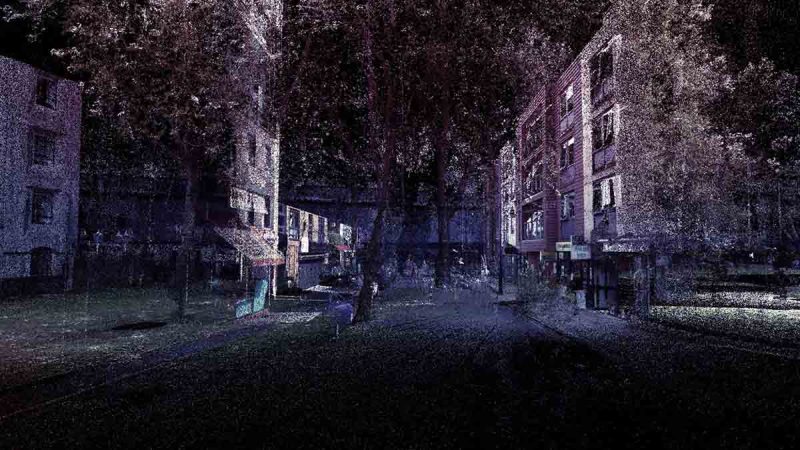What if the past, the present and the future can be in one place?
In London, more specifically in Camden, big changes are on the horizon: With the UK High Speed Rail 2 project, a British high-speed railway line is planned that will bring huge change to the district.
In the Palimpsest project by Interactive Architecture Lab developers have thought about what this construction means for the people living there - some may lose their place of residence, some their place of work and some may lose the place where they grew up with many memories. How quickly we forget our current surroundings. And years later, we only have a rough idea of what the area used to look like, as the memory of these spaces has been overwritten by the new reality.
Scan of the here and now
By scanning the current environment 1:1 and saving it in a living 3D virtual world, you can travel back in time at any time. By capturing stories of the place and different people, you can experience Camden from different perspectives and views. Never before has it been possible to "preserve" history and spatial information so well.
The two videos give you an impression of what the result of the digitisation of the Camden urban area looks like. The style of the video is somewhat reminiscent of the film Notes on Blindness, from which we reports have.
The name Palimpsest comes from Wikipedia Incidentally, it comes from a term from antiquity. This was the name given to the manuscript pages or scrolls of the time, which could be cleaned by scraping or washing and thus rewritten. The term was used by the project group and considered from the perspective of the new technology.
Past, present and future united
An exciting project to document stories and living spaces that would have been lost until now. If you combine this with a look into the future and visualise the high-speed railway project with it, the past, present and future are actually in one place. So we can say that we can travel back to the future like Marty McFly and Dr Emmett L. Brown.
Source: vrodo.de / Vimeo









